In the description of tents, you will see terms like freestanding or free standing, standing tent, and also with hyphens like self-standing tent, self-supporting tent, free-standing tent, etc. The opposite is the non-freestanding tent of course. So what is the meaning of all this, what is a freestanding tent and what is a non-freestanding tent?
Freestanding tents
In short, a freestanding tent is a type that can be pitched on any surface and it does not have to be staked to the ground. This means that when it is set up, you can also move it short distances around if you realize that the ground is not perfect.

So how this works? This is a common effect of poles and grommets which you have close to the floor of the tent. There are two possible types of poles construction:
-
- They become freestanding as soon as the pole tips are locked in the grommets. This includes two sub-types (note, the terminology is not my own):
- Semi-freestanding tents.
- Fully freestanding tents.
- They become freestanding only after the tent is attached to them. Here again, two subgroups:
- Tents with multiple poles.
- Tents with single poles.
- They become freestanding as soon as the pole tips are locked in the grommets. This includes two sub-types (note, the terminology is not my own):
About the group 1
In the group 1 you have either of the following elements together with the poles:
-
-
- An aluminum hub.
- Swivel hub.
- Intersection hub.
-
These hubs connect the poles, so when you put pole tips in the grommets, the poles become completely freestanding. Here are the pictures of the three types of hubs:
I already mentioned that there are two groups in the freestanding tents, so a few words about each of them.
What is semi-freestanding tent
Due to the mentioned hubs, you can have a very simple Y-shaped pole structure. So on one end of the tent there are two grommets, while on the other end there is only one. As you realize, the three tips of the Y go to these grommets. The aluminum hub shown above is frequently used in this case, you can see it in the picture below from the Nemo Hornet 1 tent.
In principle, the Y-shaped pole structure is freestanding by itself, it is a sort of a tripod. So there is nothing ‘semi’ here, a tripod is freestanding by definition. When you attach the tent, the structure becomes even more stable.
But clearly, the end of the tent with the single grommet does not spread correctly (the grommet is in the middle, see the Nemo Hornet 1 above). So to have the full width of the tent on this side, it is better to stake it down as the picture shows, although you could manage without it if this is a hard surface and you cannot stake it down.
So this is my interpretation of the term semi-freestanding. Any objection, comment? The reason for such a structure is to shed the weight of course, and you will see it frequently in ultra-lightweight backpacking tents.
In the picture above you see an example of a multiple grommet adjustment. Why do you need it? This is because the fabric can change tension dependent on the moisture, so you can reposition the pole tip for an optimal tension.
Fully freestanding tents
In this case, you have an X-shaped structure as the simplest case of a tent with two poles. In the case of winter tents, you can have more poles and all becomes more stable. In this case, you can find any of the hubs shown above.
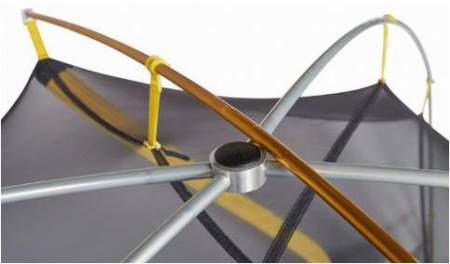
But there are many varieties of this type of course. Yet another simple structure is a single pole on the top, and it splits at both ends to form a fork-shape with two short poles on both ends. In general, when you put such poles in place, the tent becomes fully functional and stable.
The group 2
Here you have two main sub-groups:
-
-
- Tents with several poles. This is a simple structure where poles are not locked. The tent clips or sleeves ‘lock’ them together and the structure becomes freestanding and stable due to the tension created by the tent itself. Typical examples of this type are this Big Agnes Rabbit Ears 6 tent and Kelty Trail Ridge 6 Person tent.
- Single pole tents. Freestanding, really? More below.
-
Can a tent with a single pole be fully freestanding?
You might be surprised with the answer.
Yes, it can. This is the group 2 mentioned above, but this is a particular subgroup, so-called tent-cots. In this case, you have a cot which serves as a platform for the tent. The tent is attached to the cot either permanently or through a zipper. So you have one single pole, and its two tips you put in two grommets on the two sides of the cot. When you attach the tent, tension is created in the fabric and the whole structure is very stable.
See one example below, the iUcar Portable Camping Tent Cot. Notice the extra brow pole or ridge pole. It is there only to make the walls vertical, but it adds to the tension of course, and it makes the structure even more stable.
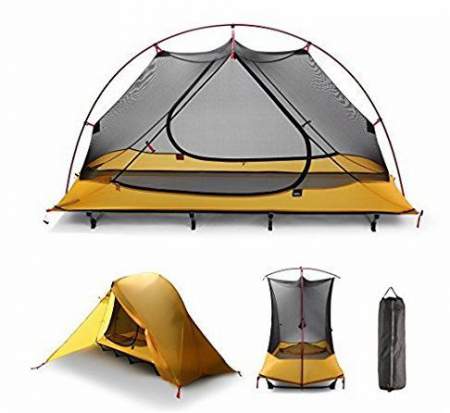
So then, what is a non-freestanding tent?
There are many tents of this type described in the site, in particular from the Sierra Designs brand. In this case, you have to stake the tent in order to have the poles upright. So you stake the base of the tent, add the poles, attach the inner tent, or the tent in general if this is not the two-layer design, and then stake out the upper body of the tent so that the poles are fixed.
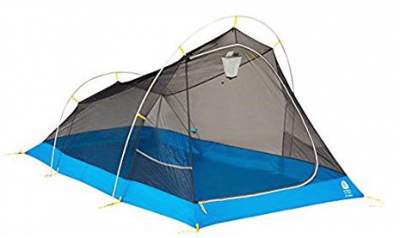
Clearly, using such tents you have to plan where you are going to pitch the tent, to avoid unpleasant surprises. You cannot set it up on a rocky terrain, on the sand or gravel, or on a frozen ground.
Thank you for reading, I hope the text has been useful, and if this is so, please share it with others. Let me know what you think, there is a comment box below.
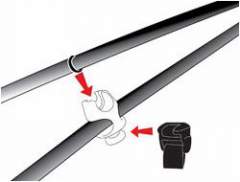
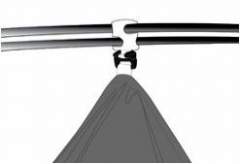
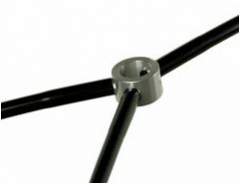
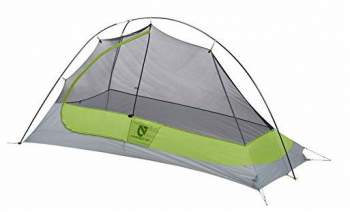
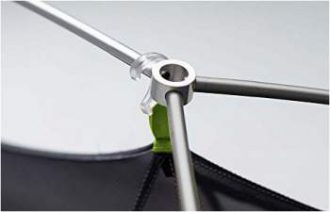

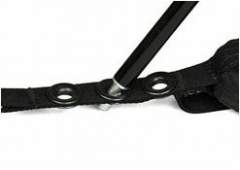
Leave a Reply